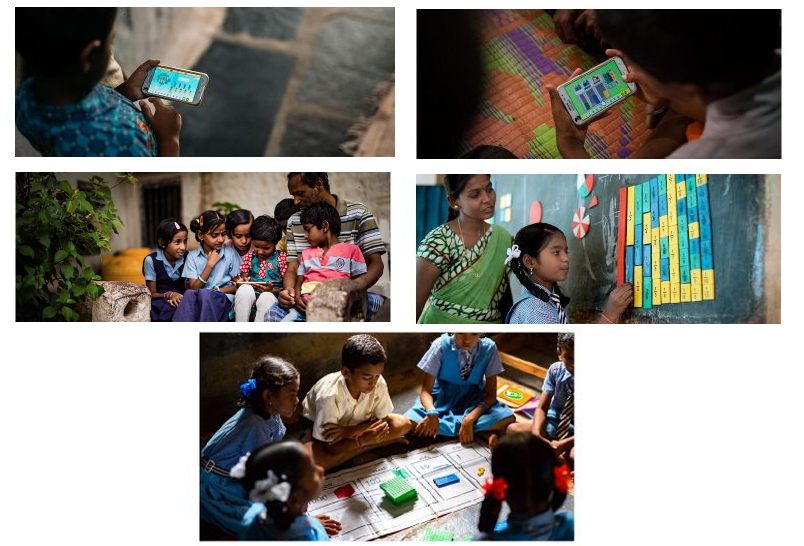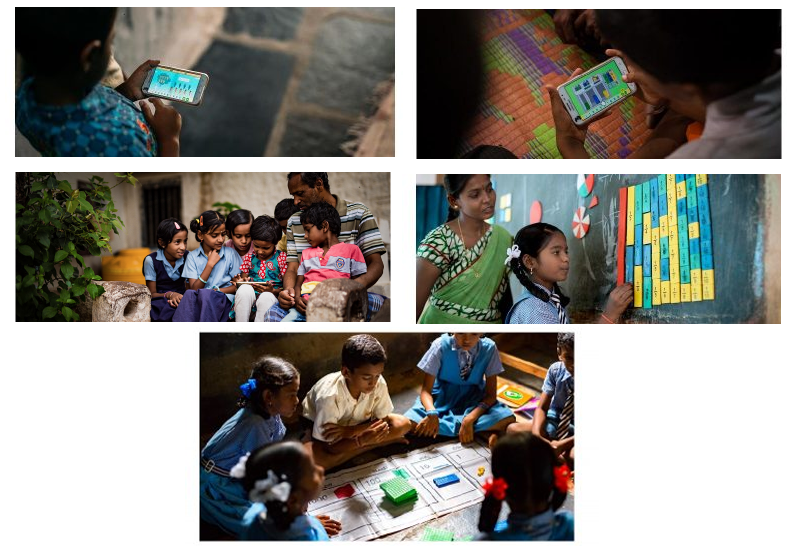EdTech Product- Parent Investment in Child’s Learning says Pushpa Thantry, Senior Programme Manager, Akshara Foundation
Blog: NASSCOM Official Blog
What led to the formation of Akshara Foundation? Can you throw light on some of its ongoing projects?
Akshara Foundation was established as a Public Charitable Trust in March 2000. Ashok Kamath, a former corporate head, is our chairman and managing trustee. The Foundation was started with a firm belief that every child has a right to quality education. A beginning was made in 2003 by starting independent balwadis for which women were trained as ‘edupreneurs.’ Being Bangalore-based, the Foundation launched its Remedial Reading Programme titled Oduve Nanu (This translates as ‘I will Read’ in Kannada) in 2004.
Ever since we began, our focus has been on primary education, covering grade I to V. Our journey began through a partnership with the Government of Karnataka (GoK). Oduve Nanu was implemented in all government schools in Karnataka in 2008.
The pre-school education package extends to teaching and learning material, which are scientifically designed to cover reading, math and English language skills. We work with government schools to achieve scale. With the GoK (Government of Karnataka) collaboration, we have touched the lives of over a million children in Karnataka, India through various programmes. Besides Oduve Nanu, we began a library programme in 2004, so that every child in a government primary school in Karnataka has a library period every week with access to good content and exciting activities around books.
In 2006 we initiated Karnataka Learning Partnership (KLP). The programme uses web-based data analysis, visualization, mobile applications, interactive voice response systems, and legacy paper-based data to help create a transparent and accountable public pre-school and primary education sector in Karnataka.
Swalpa English Thumba Fun (Some English, Lots of Fun), a print-rich programme has teaching-learning, happened in 2011.
Piloted in 2007, Nagu Nagutha Ganitha (Smile and Smile with Math) the Akshara Remedial Math Programme began with an aim of making Math a fun exercise. Learning happens quite like a phonetics class. Akshara Ganitha, the support programme focusing on making math more meaningful and fun-filled was rolled out in government primary schools in Bangalore 2010.
It focuses on improving math skills by making learning fun and relevant to everyday life and is taught based on the philosophy of ‘Activity Based Learning’ (ABL).
From the academic year beginning June 2020, GKA will have a footprint of nearly 100,000 schools ( of the 1.1 million government primary schools in India) across three states in India- Karnataka, Odisha and Andhra Pradesh. GKA is poised to impact nearly 5 million children on a daily basis. GKA is a robust and effective model engaging multiple stakeholders and giving the child exposure to math in the classroom and in the community.
All these are scalable interventions. Besides GoK, we have signed a Memorandum of Understanding (MoU) with the government of Odisha and Andhra Pradesh for GKA. We are a math knowledge partner in Gujarat.
What is the methodology used to facilitate learning?
Through GKA teachers are trained to teach math in a fun-filled manner, using several Teaching Learning Material (TLMs) . They are oriented through 17 TLMs in the kits and also a teacher’s manual. After the five-day orientation, they become facilitators for children.
Innovative tools make a math session light and engaging. For instance, math operations/concepts are taught through play money,cube and rods, fraction and decimal strips, while place value is taught through units and rods ,Abacus, etc. These concepts are taught through group learning, and this happens from standard I-V. Assessment (formative and summative) of children is done using an Android-based application on a tablet.
Can you throw light on the app?
To give the child a rounded immersion in math, what Akshara felt was missing is: A child gets about 2 hours of instruction in math per week in the classroom and no learning environment in the home. The government school child in a remote rural village is typically a first generation school goer whose parents are illiterate. This lack of a learning environment in the home deprives the child of the opportunity to engage deeply with Math and become proficient. There is an opportunity here to use technology effectively and build a useful and simple product that would make a significant difference. Hence, a math learning app Building Blocks. Building Blocks is gamified Math and a joyful approach to learning Math.
‘Building Blocks ‘- Free Digital app learning was introduced in 2017 in a phased manner. In the first year, we developed the content and mapped it to the curriculum.
The app is developed in an interactive/gamified, intuitive way. The user interface is child friendly. It works on commonly available smart phones like Lava, Micromax and RedMi as well as entry level Smartphones with 1GB RAM is enough. The game works in offline and online modes and can facilitate both rural and urban children.
The games, which are over 250 in number, are pedagogically designed as per the National Curriculum Framework 2005 for grades 1-5. Available free-of-cost in Google Play Store, the app is designed by math pedagogy experts. The game has voice-over instructions in nine vernaculars.
Since August 2018, there is an increasing trend in download from Google Playstore. We are at 1,00,000+ users as of December 2019.
DIKSHA, an initiative of the Ministry of Human Resources Development (MHRD) is a Digital Education Platform for the teachers. Through this, our games are mapped to the curriculum of the textbooks prescribed by the state government. With the digital app, teachers/parents/children can scan the QR (quick response) code. This leads to the digital content. The state governments of Karnataka, Odisha, Maharashtra and Tamil Nadu have used our digital learning blocks. This has benefitted 3.3 million children.
How has learning become inclusive?
According to the research survey done by Akshara Foundation in 2017, the smartphone penetration was 11% in rural India. But the rate of penetration has been significant since then. According to this report – the smartphone penetration in India from 2017-2022 is expected to grow by 60% . Smartphones have become more affordable, and the falling mobile data prices have helped the internet to reach a bigger mass of the country’s huge populace.
The app is designed to work in most basic android smartphones, it’s free, it has no in-app purchases or ads. Child will have access to parent’s smart phone at home and can practice maths and learn in a fun–way.
We have challenges too. Most parents are daily wage workers and the child has access to the phone only late in the evening. Word of mouth needs to be spread from children and parents on the availability of the app. Parents are important stakeholders and we need them involved in their child’s learning.
Can you throw light on the funding? What are your future plans?
Funding comes from CSR programmes conducted by various corporate houses. In future, we plan to expand our initiatives to other states. Besides that, it’s intended to scale up the programmes to standard VI to VIII.

The post EdTech Product- Parent Investment in Child’s Learning says Pushpa Thantry, Senior Programme Manager, Akshara Foundation appeared first on NASSCOM Community |The Official Community of Indian IT Industry.
Leave a Comment
You must be logged in to post a comment.








